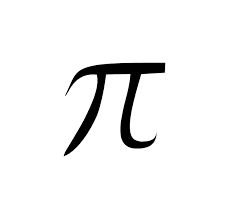Pi - The most important but weird number
 The famous Indian astronomer, Aryabhata, approximated the value of
π
as
3
.
1
4
1
6
and then expressed it as a continued fraction of the form
The famous Indian astronomer, Aryabhata, approximated the value of
π
as
3
.
1
4
1
6
and then expressed it as a continued fraction of the form
a + b + c + d 1 1 1 ,
where a , b , c , d are positive integers. Find a + b + c + d .
Details and Assumptions:
- Use the approximation π = 3 . 1 4 1 6 .
The answer is 37.
This section requires Javascript.
You are seeing this because something didn't load right. We suggest you, (a) try
refreshing the page, (b) enabling javascript if it is disabled on your browser and,
finally, (c)
loading the
non-javascript version of this page
. We're sorry about the hassle.
1 solution
Discussions for this problem are now closed
You can write it as: 3 + 7 + 1 6 + 1 1 1 1 1
I have written that only in my solution mentioned above.
He means that instead of using the \frac{} function, you can use the \cfrac{} function in your L A T E X
How did Aryabhata get this even he don't know value of pi
Solution:
3 . 1 4 1 6 = 3 + 1 0 0 0 0 1 4 1 6
= 3 + 1 4 1 6 1 0 0 0 0 1
= 3 + 1 4 1 6 9 9 1 2 + 8 8 1
= 3 + 7 + 1 4 1 6 8 8 1
= 3 + 7 + 8 8 1 4 1 6 1 1
= 3 + 7 + 8 8 1 4 0 8 + 8 1 1
= 3 + 7 + 1 6 + 1 1 1 1 1
Therefore, a = 3 , b = 7 , c = 1 6 , d = 1 1
Sum = a + b + c + d = 3 + 7 + 1 6 + 1 1 = 3 7
Thus, the answer is: a + b + c + d = 3 + 7 + 1 6 + 1 1 = 3 7